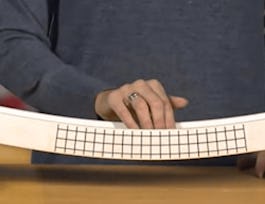This course ranges from the earth structure, the generation of earthquakes and seismic waves by faults to the seismic response of soils, foundations and structures as well as seismic risk. It is consequently aimed at undergraduates, graduates and professionals interested in engineering seismology, earthquake engineering or seismic risk. It investigates various technical fields: rock mechanics, soil dynamics, structural dynamics and dynamic soil-structure interaction.



Seismology to Earthquake Engineering



Instructors: Jean François Semblat
Sponsored by InternMart, Inc
5,529 already enrolled
(35 reviews)
Recommended experience
What you'll learn
How seismic waves propagate
How earthquakes are generated
How structures withstand seismic shaking
Skills you'll gain
- Engineering Analysis
- Drafting and Engineering Design
- Mathematical Modeling
- Architectural Design
- Risk Modeling
- Engineering
- Structural Engineering
- Building Services Engineering
- Applied Mathematics
- Civil and Architectural Engineering
- Structural Analysis
- Civil Engineering
- Architectural Engineering
- Finite Element Methods
- Mechanics
- Vibrations
- Mechanical Engineering
- Architecture and Construction
- Risk Analysis
- Engineering Calculations
Details to know

Add to your LinkedIn profile
10 assignments
See how employees at top companies are mastering in-demand skills


Earn a career certificate
Add this credential to your LinkedIn profile, resume, or CV
Share it on social media and in your performance review

There are 6 modules in this course
What's included
1 video
The first week allows to discover the Earth structure, the plate tectonics, the behaviour of faults in the crust and the radiation of seismic waves. The seismicity of the Earth is studied and that of Mars is shown as well! The control of faults and the magnetic properties of the Earth are finally explained.
What's included
11 videos2 assignments
Various types of seismic waves are presented through both actual observations and theoretical interpretation. Their propagation and amplification in heterogeneous geological structures are discussed (soil layers, alluvial basins). The application to site characterization is finally proposed.
What's included
8 videos2 assignments
The seismic soil response is analyzed first. The simplified soil response is then converted into a so-called response spectrum for sake of seismic design. The seismic response of structures is discussed through eigenmodes, modal superposition and modal recombination. Seismic isolation and in situ dynamic characterization of structures is also presented.
What's included
10 videos3 assignments
Dynamic Soil-Structure Interaction and Soil-Foundation-Structure Interaction are presented first. Typical nonlinear behaviours of structures are then analyzed. The seismic response of structures is finally discussed through simplified (e.g. push-over) and time history nonlinear analyses.
What's included
8 videos2 assignments
Vulnerability and damage assessment are introduced first. They are illustrated for masonry structures in the field and concrete structures on shaking tables. The effect of uncertainties is then discussed in order to derive fragility curves. Finally catastrophe and loss models are explained.
What's included
7 videos1 assignment
Instructors



Offered by
Why people choose Coursera for their career




Learner reviews
35 reviews
- 5 stars
62.85%
- 4 stars
14.28%
- 3 stars
8.57%
- 2 stars
2.85%
- 1 star
11.42%
Showing 3 of 35
Reviewed on Jun 5, 2023
Overall good!
Recommended if you're interested in Physical Science and Engineering

École Polytechnique

Dartmouth College

Google Cloud

Open new doors with Coursera Plus
Unlimited access to 10,000+ world-class courses, hands-on projects, and job-ready certificate programs - all included in your subscription
Advance your career with an online degree
Earn a degree from world-class universities - 100% online
Join over 3,400 global companies that choose Coursera for Business
Upskill your employees to excel in the digital economy



